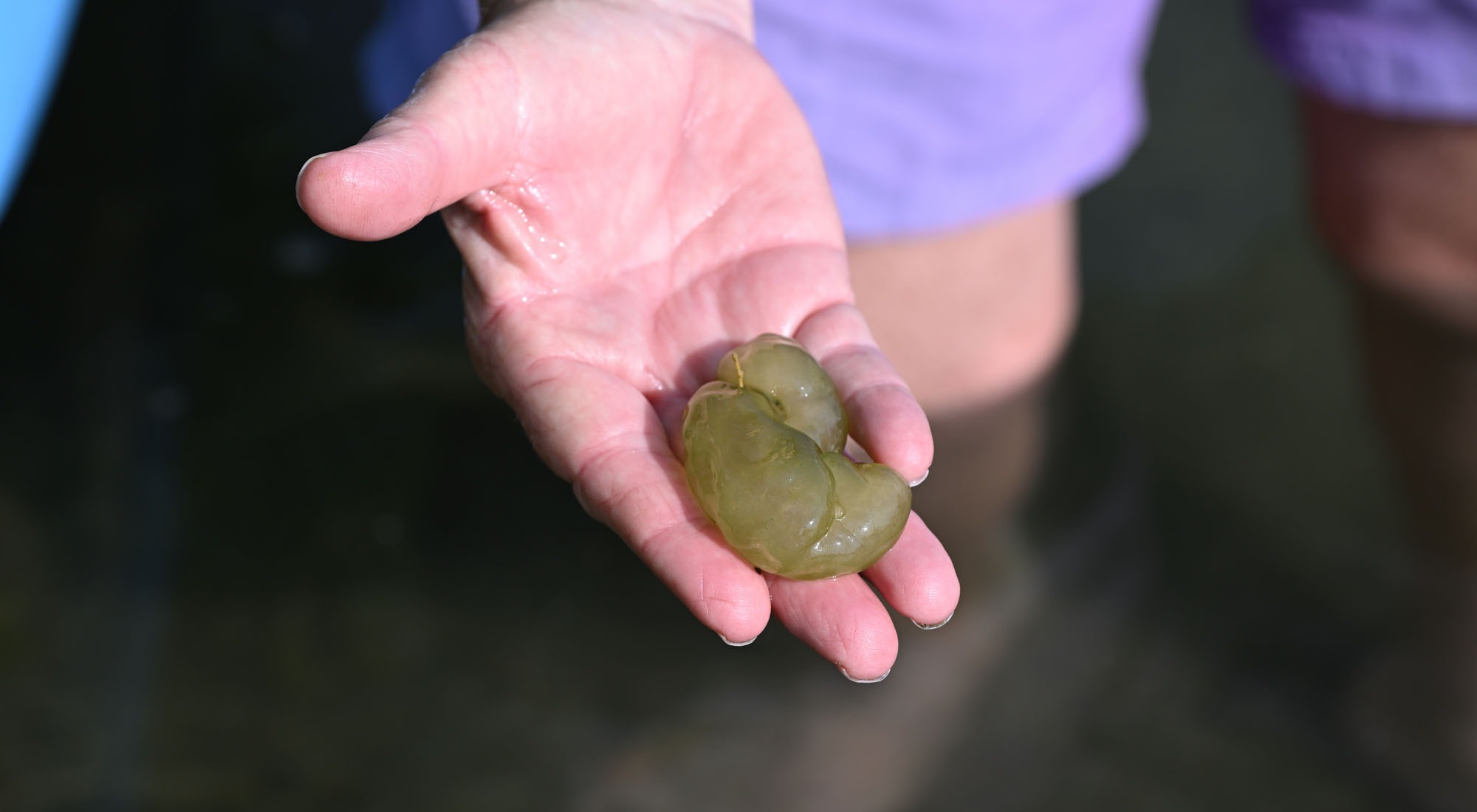Green globs that appear each spring are nothing new to Clark Lake. Seventy years ago (and probably today), kids used them as projectiles for their mock water battles. This year’s crop seemed plentiful, especially in the Cove. In this pic, Carolyn Nichols holds a sample.

So, what are they? Carolyn, John Deming, and others searched the web and came up with some possibilities. But not one pic looked anything like Clark Lake’s specimens. Your reporter posed the question to PLM, the company that surveys and treats the lake, when necessary. Their staff, many of whom have college degrees in what lurks below the surface, visit a number of lakes in the area. They should know, right? James Scherer, regional manager, says this about our annual green blobs:
” These green masses go by the name of Ophrydium. Ophrydium are colonies of microscopic cells that form in spherical shapes. They’re common in freshwater environments such as lakes, ponds, and slow-moving streams. Often Ophrydium tends to have a green hue as they have a symbiotic relationship with Chlorella which leads to the green coloration. These Ophrydium colonies are generally harmless and play a role in the ecosystem by contributing to nutrient cycling and serving as food for various aquatic organisms.”

Note that nothing was said about their use as a weapon among kids.











